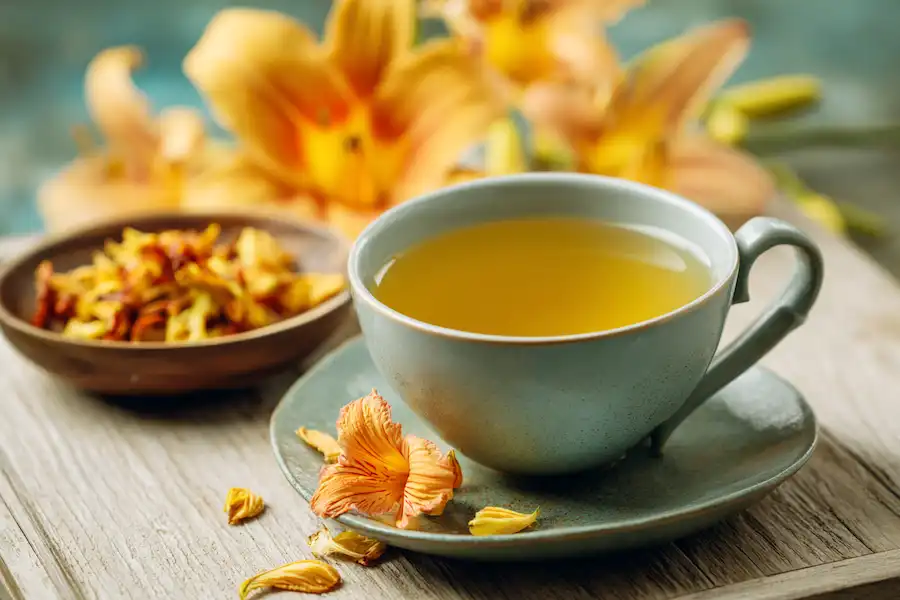How to Use Daylilies at Home
🌼 1. Eat the Fresh Flowers
Pick the fully opened blooms and add them to salads. They bring a delicate crunch and a splash of color. You can also stuff them with soft cheese or grains and bake them.
🥢 2. Stir-Fry the Buds
Unopened flower buds are a popular ingredient in Chinese cuisine. Quickly sauté them with garlic, ginger, and soy sauce for a simple side dish.
🍲 3. Make Daylily Soup
Dry the flowers and simmer them in broth with mushrooms and vegetables for a traditional “golden needle soup.”
🍠 4. Cook the Tubers
The small tubers (roots) can be cleaned, peeled, and boiled or roasted like miniature potatoes.
🍵 5. Brew a Relaxing Tea
Use the petals (fresh or dried) to make a calming tea. Just steep a handful in hot water for 5–10 minutes and enjoy before bed.
🌿 6. Try a Poultice
Mash the leaves or petals and apply to minor wounds or burns. The plant’s natural compounds help soothe the skin.
Important Tips Before You Try
- ✅ Only consume Hemerocallis – not true lilies (Lilium), which are toxic.
- ✅ Start with small portions to test your body’s tolerance.
- ✅ Avoid eating flowers that may have been sprayed with chemicals or pesticides.
- ✅ Collect flowers and parts in the morning, when they’re fresh and full of nutrients.
Why You Shouldn’t Ignore Daylilies Anymore
This once-overlooked plant is beginning to earn its rightful place not only in ornamental gardens but also in herbal pantries and gourmet kitchens. If you have a patch of Hemerocallis blooming in your yard or nearby, you’re not just looking at a decorative flower — you’re looking at a nutritional powerhouse, a natural remedy, and a culinary treasure.
So next time you see a daylily swaying in the wind, remember: it’s not just beautiful — it’s powerful.

Disclaimer: Always make sure you’re correctly identifying Hemerocallis and not toxic lookalikes. If you have health conditions or take medications, consult with a healthcare professional before using any new plant for food or medicine.
